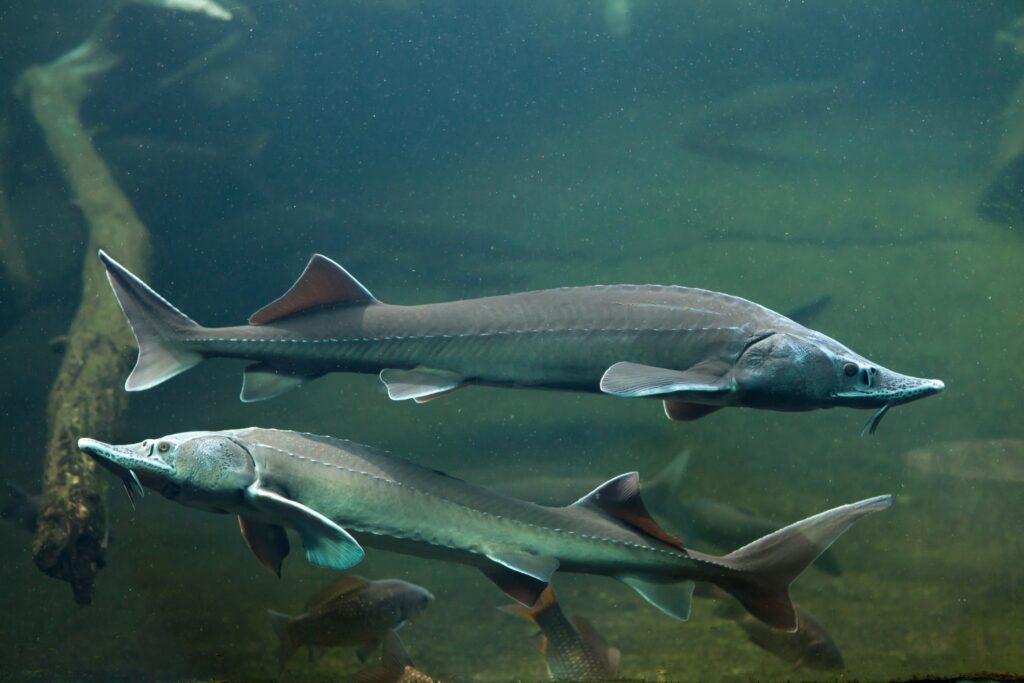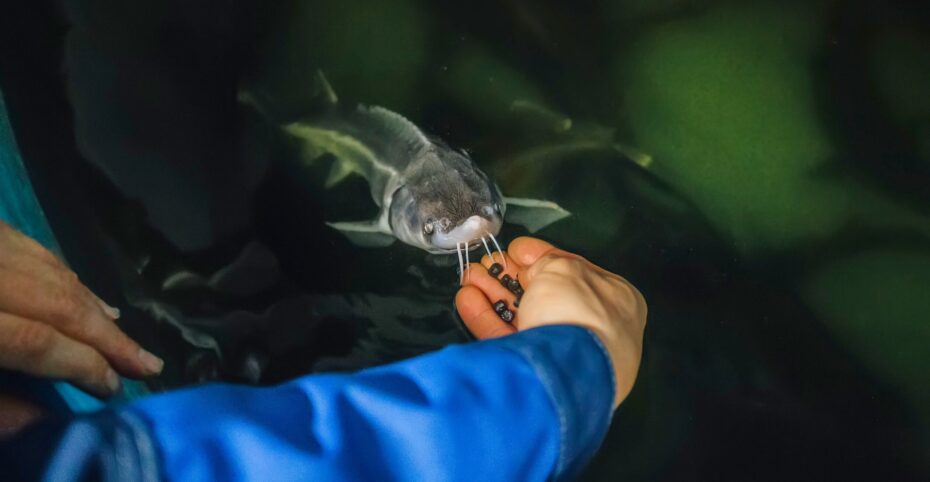The Endangered Species Act (ESA) has helped protect threatened and endangered wildlife and plants since 1973, including many sturgeon species. However, the ESA needs enhancements to prevent all sturgeon from extinction effectively.
Learn more about the current impacts of the ESA on global sturgeon species and how we can save this vital freshwater fish with legislative improvements.
Endangered Species Act (ESA): Mixed Impacts on Domestic & International Sturgeon Conservation

The ESA has made significant progress in sturgeon conservation. They’ve implemented illegal fishing locations in high-risk sturgeon habitats, repopulation programs, public educational resources, and government-required certifications for sustainable caviar farm practices.
However, the latest updates in the ESA resulted in mixed impacts on domestic and international sturgeon conservation.
Repopulation Success of Atlantic Sturgeon in Virginia
The ESA and Clean Water Act of 1972 successfully repopulated the Atlantic sturgeon in Virginia in 2023. The repopulation program cleaned Virginia’s polluted tidal rivers to restore Atlantic sturgeon wild habitats in partnership with federal and state organizations, including:
- Virginia Commonwealth University (VCU) Rice Rivers Center
- James River Association (JRA)
- Virginia Department of Wildlife Resources (DWR)
- National Oceanic and Atmospheric Administration (NOAA) Fisheries
The Clean Water Act banned sturgeon fishing in Virginia in 1974 and 1990 to strengthen their recovery efforts. Additionally, the DWR requires permits for water infrastructure developments to ensure Atlantic sturgeon habitats remain safe and undisrupted. As a result, they’ve significantly improved water quality and increased spawning and populations of Atlantic sturgeon.
Lake Sturgeon Are No Longer Under the Endangered Species Act List
The U.S. Fish & Wildlife Service (FWS) recently ruled Lake sturgeon no longer requires ESA protection due to successful domestic stocking programs and wild habitat restoration. While this may seem like successful progress in sturgeon conservation, it puts this species at risk without ESA protection.
Twenty states filed petitions against the ESA’s ruling on Lake sturgeon, as overharvesting remains a prominent issue, climate change is deteriorating wild habitats, Lake sturgeon are slowly reproducing (up to three decades to reach spawning age), and dams are still blocking spawning routes, causing “irreparable harm.”
Although state regulations like harvesting limits during fishing seasons, guarding habitats from poachers, and dam removals helped, sturgeon must remain a protected species to prevent them from extinction.
ESA & International Affairs Program Support Global Sturgeon Conservation

The ESA and International Affairs Program (IA) work together to protect endangered foreign species, including sturgeon.
They enacted international protection efforts, including:
- Security stations at major international ocean parts and border crossings
- Wildlife inspector monitoring to stop illegal smuggled wildlife and products
- Over 4,200 grants to fund sturgeon conservation missions
However, the ESA and IA technically don’t have the legal jurisdiction to regulate threatening sturgeon activities in other countries. International cooperation is required to improve sturgeon conservation effectively.
Endangered Species Act FAQs
What is the Endangered Species Act?
The Endangered Species Act is a national law that protects threatened and endangered plants and wildlife per their habitat locations. It was enacted by the U.S. FWS and NOAA Fisheries Services to improve conservation for at-risk species.
When Was the Endangered Species Act Passed?
Due to rapidly declining animal and plant species populations, the ESA was passed on December 28th, 1973. It was enacted to protect and recover at-risk species from threatening impacts, including climate change and human-related activities.
What Does the Endangered Species Act Do for Sturgeon?
The ESA implements various protection measures for sturgeon, including:
- Getting government authorization for all activities in endangered and threatened wild sturgeon habitats to prevent destruction and negative modifications
- Illegal harvesting and banned fishing locations of ESA-listed sturgeon species
- Illegal import, export, interstate, and foreign commerce of ESA-listed sturgeon species
While these efforts significantly help, the ESA must include all sturgeon species in their protected list to prevent conservation progress from backtracking.
Support SIAA’s Mission in Strengthening Sturgeon Conservation Laws
At SIAA, one of our causes is modernizing existing U.S. and international laws, including the ESA, to better align with sturgeon and aquaculture conservation goals. Federal agencies still face challenges to protect sturgeon, including illegal poaching, unsustainable caviar farm practices, and climate change hazards.
We partner with organizations like the Federation of European Aquaculture Producers (FEAP) and the World Sturgeon Conservation Society (WSCS) to advocate for stronger policy changes and legal measures to protect global sturgeon species with lasting change.
Whether it’s a giving one-time donation, becoming a monthly SIAA member, or contacting your local representatives, any amount of support makes a significant difference.
Join our mission to change the future of sturgeon and aquaculture together.





